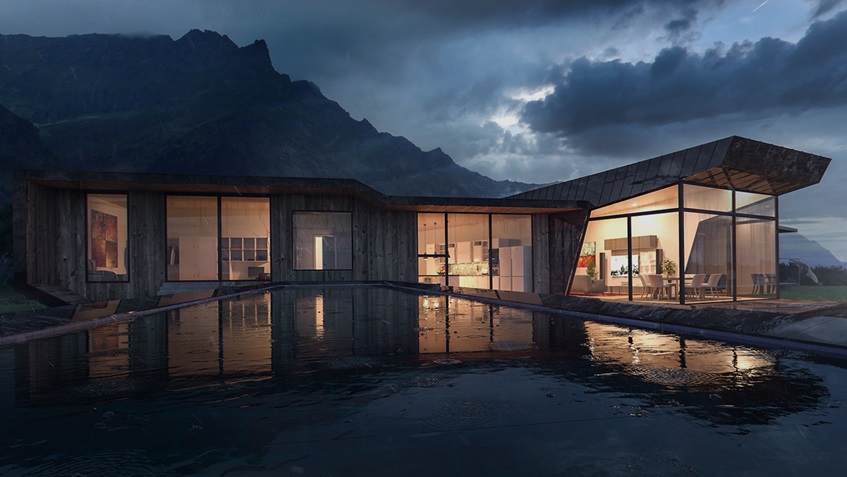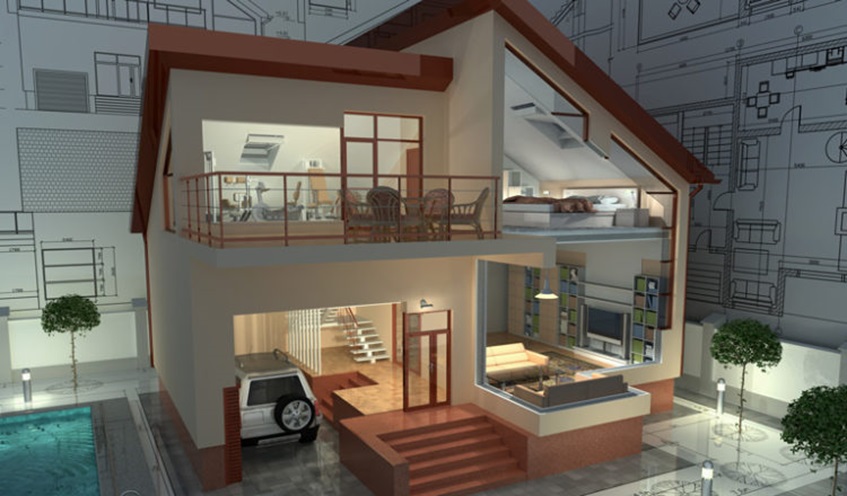
Craft Your Dreams into Reality: Uncovering the Benefits of 3D Architectural Visualization
3D visualisation is a ground-breaking technology used in a variety of industries, including business, engineering, design, and healthcare. It lets you study and analyse complex structures before building them. This level of comprehension was difficult to achieve with more outdated approaches. This technology goes beyond simple graphical representation and turns data into realistic and engaging experiences. It opens amazing possibilities for communication, creativity, and innovation by enabling us to interact with topics in new ways.
Contents
What Does 3D Visualisation Mean in Architecture?

Nowadays, architecture companies offer realistic 3D architectural visualization services and create incredibly lifelike representations of your desired structure. These realistic representations, as opposed to conventional 2D pictures, capture depth, lighting, scale, textures, and different angles of actual objects and environments.
This results in a high level of realism that lets you completely immerse yourself in the image and engage with it from different angles. To reach this degree of realism, 3D visualisation companies use advanced 3D rendering technology. They use advanced modelling and ray tracing methods to mimic the interaction of light rays with different surfaces.
Cutting-edge texture mapping accurately captures the realistic textures of materials. Physics engines generate the realistic movement and interaction of items. Particle systems can simulate many effects such as smoke, explosions, and weather conditions. Intricate lighting replicates shadows and light in the environment. All of this culminates in a 3D environment with unparalleled realism. To create completely rendered settings, companies convert 3D model data from CAD software, 3D scans, and additional digital sources.
They achieve this with the help of specialised visualization software. These programs turn conventional 2D media into deeply engaging virtual simulations. This helps you understand spatial connections, operational dynamics, and architectural style like never before, whether through a basic 3D picture or an interactive virtual reality. This supports creative problem-solving in a wide range of industries, including product design, engineering, healthcare, and urban planning.
What are the Benefits?
Improved Collaboration
The 3D architectural visualization facilitates smooth cooperation between you and your client because the realistic reproductions offer a common spatial context of concepts, project plans, and data. It allows remote teams to investigate different strategies, get feedback, and comprehend intricate project dynamics on a tangible level. This leads to better coordination and quicker development cycles.
Effective Presentation
The 3D visualisation service helps companies efficiently communicate their designs and ideas to their clients through interactive 3D experiences, such as product demos and architectural walkthroughs. Compared to verbal descriptions or 2D photos, it offers sensory knowledge that has a considerably bigger impact. This helps you better communicate your ideas with your client and leaves a memorable impression.
Serves as a Shopping List
When you order a realistic rendering, architects often ask about the construction materials and other elements that you wish to use. They can recreate the appearance of these elements thanks to an innovative database that contains the necessary 3D assets.
The realistic model can include all the specific elements in your structure, from the flooring to the wooden coffee tables and lighting fixtures, so you can purchase them. This gets rid of the tedious procedure of selecting the right elements at traditional and online retailers. It supports budget planning and project implementation.
Enhanced Creativity
The 3D rendering services offer an adaptable digital workplace for experimenting with materials and elements, stimulating creativity, and igniting ideas in the process. Skilled designers and engineers can bring your ideas to life without being restricted by the limitations of physical resources.
Improved Record-Keeping
With this service, companies often create detailed digital recordings of intricate goods and settings for better documentation. Extensive 3D models offer visual aids that go beyond the capabilities of conventional 2D image documentation. This allows better archiving for historical preservation, maintenance processes, design reference, and other purposes. 3D documentation builds dynamic visual databases in place of written descriptions to better communicate intricate characteristics.
Money-Saving

Through digital creation and iteration of photorealistic images and virtual prototypes, 3D visualisation optimises cost efficiency during the design process. Before spending money on tangible prototypes and infrastructure, you have more freedom to consider choices and fine-tune the existing design. When making a purchase, many people feel that they first need to view the completed structure, even if this isn’t always possible. By using realistic rendering, you can experience the finished product before it’s built.
Timesaving
One of the most significant benefits of 3D visualisation compared to conventional approaches is that it allows for significantly quicker concept iterations. Instead of taking days to conceptualise an idea, architects adjust and evaluate the updated design in a matter of minutes. Fast digital prototyping allows them to explore hundreds of iterations in search of the ideal function-to-aesthetics ratio. This eliminates the limitations of traditional prototyping, where each iteration costs a substantial amount of money and time to produce.
Early Troubleshooting
Although your idea might look great on paper, this doesn’t always mean that it will work well in practice. Occasionally, designers might overlook a minor mistake throughout the design phase and only notice it after the job is underway or even finished. For example, the ceilings might seem excessively low, or the placement of power outlets could end up creating a fire hazard. When it comes to photorealistic architectural representation, all the mistakes are out in the open and the designer can correct them before the building phase even starts.


No Comments